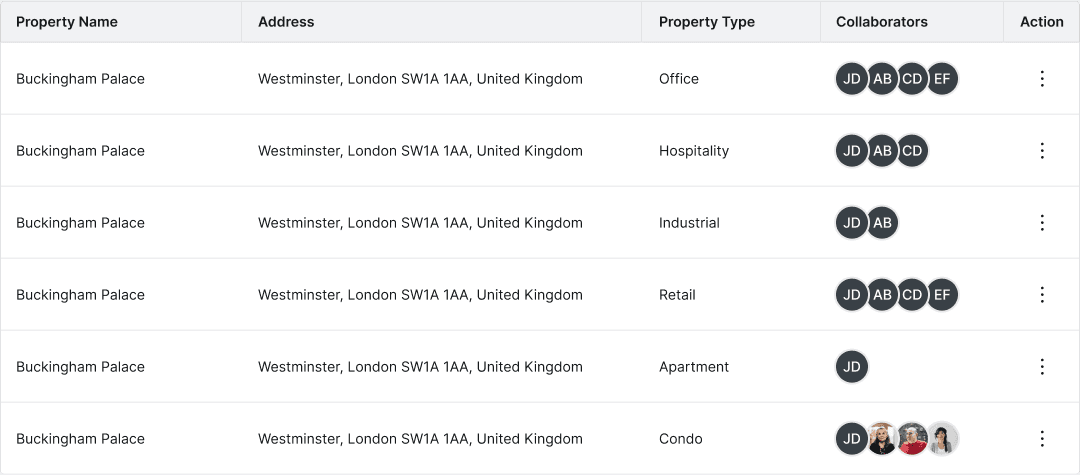Role
UX Lead — User Research, User Interviews, Ideation, Visual Design, Prototyping
Timeline
July 2021 – August 2021
Status
Shipped Q3 2021 🚀
Overview
VendorPM is a platform designed to streamline the way property managers and vendors (such as contractors, maintenance teams, and service providers) work together. As more users began onboarding to the platform, we saw that the Properties page was not being used to its full potential.
I led the end-to-end design direction of the Properties page and played a pivotal role in defining the team’s maturing Design System.
—Context
The Properties page provides Property Managers with an intuitive dashboard to efficiently track and view all of the buildings under their management.
It also offers the ability to easily add new properties to the portfolio and assign additional Property Managers to specific buildings, streamlining team collaboration and property oversight.
VendorPM’s current Properties page
—Brief
The Properties page plays a pivotal role in streamlining the transactions between Property Managers and Vendors. However, the Customer Success Team noted that this page is primarily used only when Property Managers need to add new properties, but tends to go underused otherwise.
To address this, we asked:
With this question in mind, I conducted a series of interviews with members of our Customer Success and Vendor Sales teams. I focused on gathering insights through key questions, such as:
What features of the current Properties page are effective, and which ones need improvement?
What information should Property Managers prioritize documenting?
How can Property Managers increase their response rate from vendors on Quote Requests?
Additionally, I was able to gather valuable feedback directly from our clients through product interviews, further enriching our understanding of how to enhance the platform.
—Findings
Inconvenience of adding/updating information
For Property Managers, we observed that the current Properties page had several limitations. Key property information, such as existing quote requests and past services, was not displayed or linked to each property.
Additionally, while Property Managers can add collaborators to properties, they aren’t able to do so directly from this page. This limitation has led to an increase in support tickets for the Customer Success team.
Out of platform communication due to lack of information
When Vendors receive a quote request, they typically need more detailed property information to provide an accurate service quote.
However, we found that Vendors often lack this essential information when receiving requests from Property Managers. As a result, Vendors frequently have to contact Property Managers outside our platform or arrange a site visit to gain a clearer understanding of the property.
—Ideation
With these goals in mind and the insights gathered from various stakeholders and company clients, I sketched a few low-fidelity wireframes to visualize how I could incorporate these concepts into the Properties page.
—Explorations
1.
A key limitation of the original Properties page was its lack of detailed information for each property, along with limited functionality for Property Managers.
Exploration 1: List View
Exploration 2: Map View
2.
When designing for the average Property Manager, it's crucial to keep forms simple and straightforward, ensuring they are as easy to complete as possible.
One challenge that I faced was figuring out how to collect the required property information and where to include these points of data collection in existing user flows.
One area of modification was the case in which a Property Manager would send out a Quote Request to several different vendors.
3.
Exploration 1: Tabular
Exploration 2: Default
—Final Designs
After several discussions with my Design Lead, Product Manager and the developers, I finished polishing and refining the small details of each wireframe in Figma for final hand-off.













